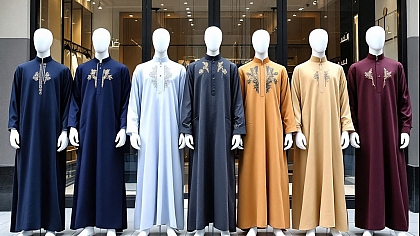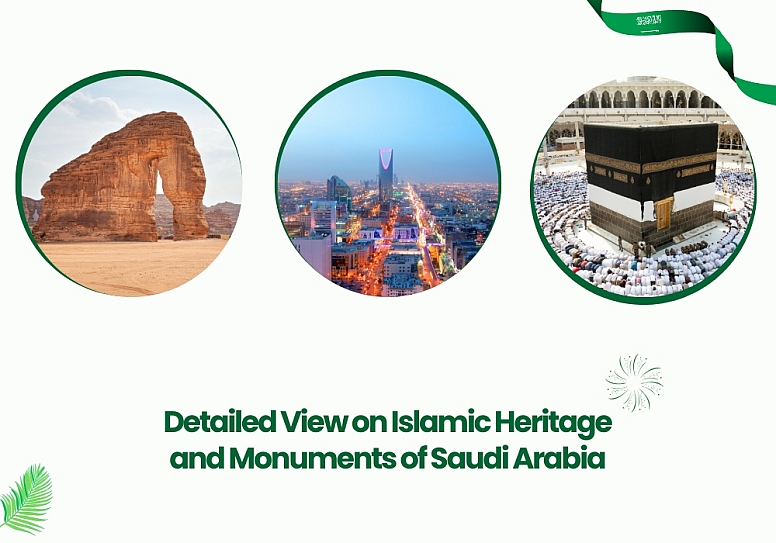
Saudi Arabia: Islamic Heritage and Monuments
Saudi Arabia is commonly acknowledged as the cradle of Islam and occupies a rather particular position in the affection of more than 190 million Muslims as the guardian of the shrines of the two Abrahamic holy places of Islam, the Kingdom of Saudi Arabia encompasses unique and valuable Islamic historical places and monuments that meaningfully represent the essence of the country's religious character.
Saudi Arabian Islamic history and architecture reflect Islamic history, the history of the Prophet’s descendants, and the history of the Islamic world. MuslimHut offers a detailed outline of significant Islamic icons and structures that make Saudi Arabia the centre of the Islamic world.
Mecca- The Holiest City in Islam
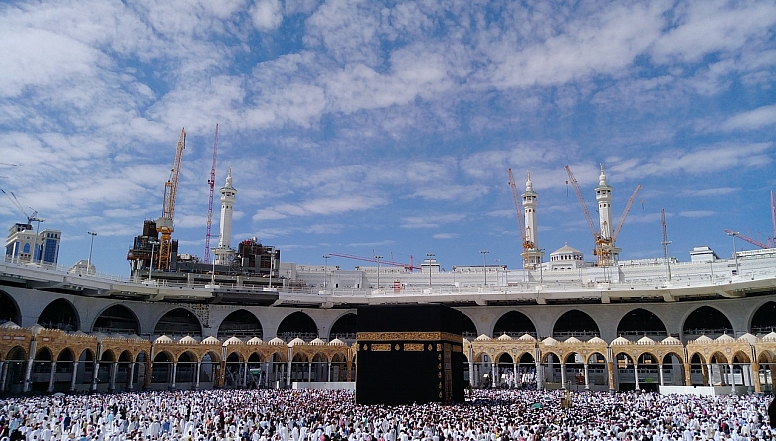
- The Kaaba: The centre of Islamic history in Saudi Arabia is Mecca, where the Prophet Muhammad (Sallallahu Alaihi Wasallam) was born and located, and the Kaaba is the holiest site in the Islamic world. Apart from being part of the Masjid al-Haram, a grand mosque, the Kaaba is a building in the shape of a cube that Muslims pray toward five times a day. From the Oral tradition and Islamic sources, the structure is believed to have been established in antiquity by the patriarch, Prophet Ibrahim (Abraham) and his son, Prophet Ismail (Ishmael), peace be upon them.
Through the ages the structure of the Kaaba has been rebuilt many times, yet the sanctity of the structure never ages. When you visit this holy place in Ramadan, you will feel a completely different vibe because of the holiness and blissfulness of this month. That’s why Muslim travel experts suggest the month of Ramadan for Umrah's journey to make it memorable forever. So you need Ramadan Umrah packages from any good travel agency with a good history.
Millions of Muslims worldwide perform the Hajj every year. Umrah, which requires circling the Kaaba seven times counterclockwise, is the core of the pilgrimage during the Hajj in the last month of the Islamic calendar. The Kaaba represents the original community of Muslim people and Muslims’ holy focal point worldwide.
- Masjid al-Haram: The Major Mosque of the Holy City is the Masjid al-Haram in Mecca, which engulfs the Kaaba; this is the largest mosque in the world and has expanded throughout Islamic history to accommodate the continually swelling number of worshippers. However, apart from its ample space, this mosque is essential in history as it has always been a Muslim prayer house since Prophet Muhammad Sallallahu Alaihi Wasallam's existence.
Masjid al-Haram retains the construction style of a traditional Islamic mosque and the construction ideas of a contemporary architectural masterwork: tall Minarets, regal arch, and elaborate geometric designs to accentuate Islamic civilisation’s craftsmanship. Besides the Kaaba, Masjid al-Haram's other attributes include the Maqam Ibrahim (Station of Abraham) and the Well of Zamzam, which are of religious importance in Islamic tradition.
Medina - The Holy City
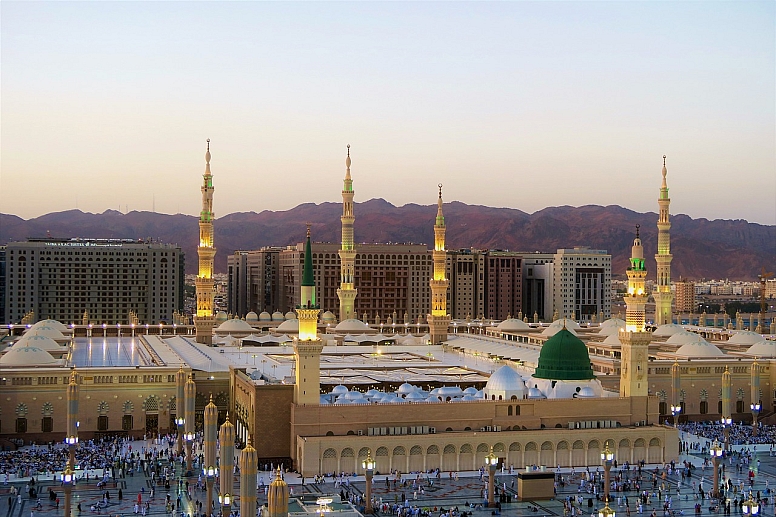
- Al-Masjid an-Nabawi: The second holiest city in the Islamic world is Medina, where Prophet Muhammad (Sallallahu Alaihi Wasallam) had to relocate when he and his followers were driven out of Makkah. Here, he founded the first Islamic state and built Al-Masjid an-Nabawi, the Prophet’s Mosque, which also contains the Prophet Muhammad's (Sallallahu Alaihi Wasallam) final resting place. It has been a house of worship dedicated to Muslims for over a millennium and a half.
The Green Dome of Al-Masjid an-Nabawi shows the burial place of the Holy Prophet Muhammad (Sallallahu Alaihi Wasallam). Apart from being a centre for prayer, this mosque is also a centre of Islamic political authority since it is here that the Prophet (Sallallahu Alaihi Wasallam) began establishing the structure of the Islamic state and Islamic law.
Al-Masjid an-Nabawi has been expanded several times; its architectural style reflects early Islamic architecture and then Ottoman and Saudi styles. The interiors of the Mosque have beautifully written scripts, inscriptions, marble columns and beautifully installed chandeliers, giving a calm and divine look to the place. Hajj pilgrims and those who intend to perform Umrah navigate to Medina to visit this mosque after performing either of the two religious obligations; they worship in the mosque as well as pay their respects to the Prophet Muhammad (PBUH).
- Al-Baqi Cemetery: Next to Al-Masjid an-Nabawi is the Al-Baqi Cemetery, one of the oldest and most essential cemeteries in the history of Islam. This cemetery includes the graves of many companions and family members of the Prophet Muhammad (Sallallahu Alaihi Wasallam), such as his daughters and close kinfolk. People should visit Al-Baqi to understand the early challenges of the Islamic faith and the hard sacrifices that the prophet's companions made in forming and expanding the religion.
The Hajj Pilgrimage Sites- Mina, Arafat, and Muzdalifah
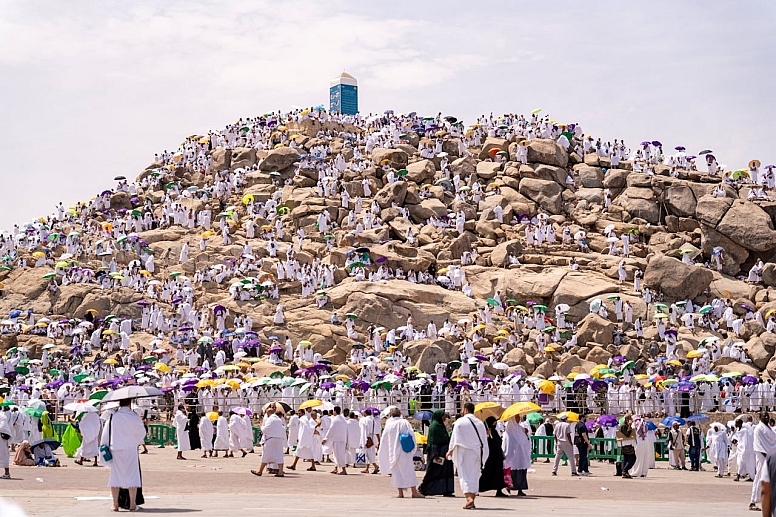
However, the Hajj pilgrimage to the holy land of Mecca and Medina is surrounded by other significant Islamic landmarks that are highly in demand during the pilgrimage since each place is important for performing Hajj rituals.
- Mount Arafat: Arafat is one of the most significant places of worship in the Hajj journey. It is where the Prophet Muhammad (Sallallahu Alaihi Wasallam) gave the Farewell Sermon in his last Hajj pilgrimage. Arafat is the climax of the Hajj, where the pilgrims stand at the highest point to ask for forgiveness, and they will receive it. This day has great religious importance since it is when sins are forgiven, and prayers are accepted.
- Mina: The other important place during Hajj is Mina, where Ramy al-Jamarat is performed, the Stoning of the Devil. Pilgrims pelt three pillars with small stones as a sign of their refusal to sin; the same was done by the prophet Abraham (Alaihis Salaam) with the temptation of Satan. This rite is a celebration of faith by Prophet Ibrahim (Alaihis Salaam) and his positive attitude towards obeying Allah’s instructions.
- Muzdalifah: On the day following Arafat, pilgrims journey to Muzdalifah in preparation for the stoning of the devil in Mina by gathering stones for this ritual. Muzdalifah symbolises plainness, collectiveness, and brotherhood/sisterhood because everyone will have the same status regardless of colour, race, religion, etc., waiting for a continuation of Hajj.
Islam south of the pilgrimage
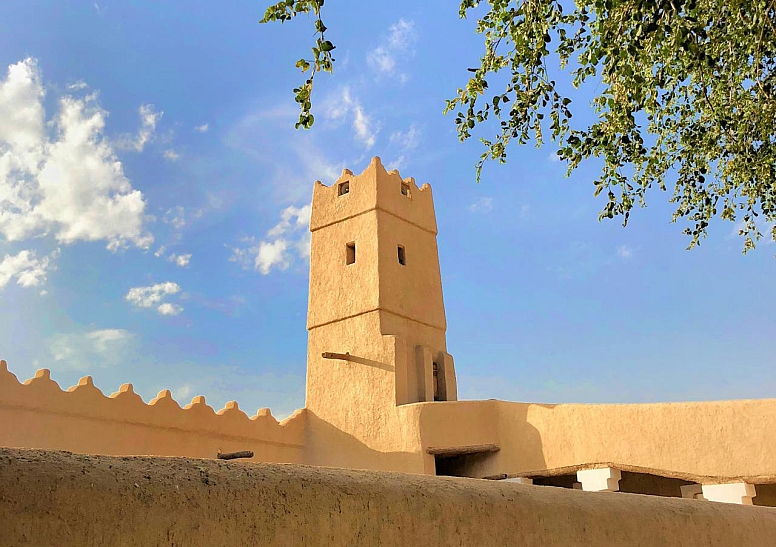
- Diriyah: Besides being a religious country, Saudi Arabia has many heritage sites associated with the Islamic civilisation era. Diriyah is a historical site on the edge of Riyadh, a UNESCO World Heritage site, and the core of modern Saudi Arabia. It used to be the capital of the first Saudi state established in the 18th century by Imam Muhammad ibn Saud. It was a focus of the political and religious conquest of the Arabian Peninsula under the sovereignty of Islam.
A pro tip for Muslims, when you go for the Umrah journey, you should also visit other places. First, you must choose a month with good weather and less heat, like November, and then you can explore more places than performing Umrah. For this, you can have Umrah packages with customised options from any good travel agency.
There are still remnants of old palaces, mosques, and fortifications in the At-Turaif District in Diriyah, though these are in the architectural form of the Najd area. Many attempts are being made to restore this significant Islamic monument for its use as a cultural and tourist attraction.
- Mada'in Saleh: Similarly, Mada’in Saleh or Al-Hijr is another world heritage site in Saudi Arabia’s northwestern area, relevant to pre-Islamic and early Islamic history. Mada’in Saleh is an ancient city of the Nabatean civilisation that designed the city of Petra in Jordan. It is considered a well-preserved site with rock-cut tombs and structures dating back to the 1st century CE.
Although Mada’in Saleh is best known as the Nabatean city, the Qur'an also describes it as the city of the Thamud people. As such, it was destroyed for disobedience to Allah. The site symbolises what happens when people ignore the path outlined in the Qur'an, a vital tenet of the Islamic religion.
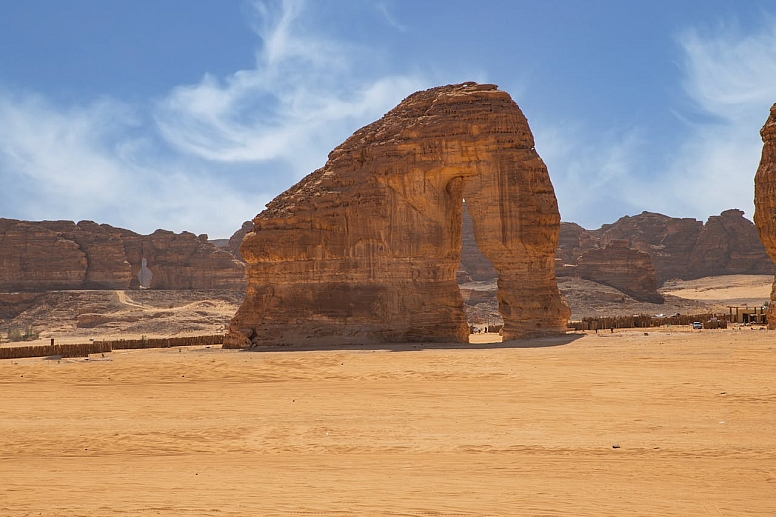
The tremendous Islamic legacy of Saudi Arabia and its cultural pearls keep the story of Islam’s birth and development in people’s memory. From the Kaaba shrine in Mecca to the Prophet’s Mosque in Medina or from the holy ‘shrines’ of Islam to the beginnings of Islam in Diriyah and Mada’in Saleh, these structures testify to Islam's spiritual, cultural and historical history. These sites are resources of narrative history about the Muslim communities' faith, commitment and adoration, which help remember the past.
The current Saudi Arabian practice of protecting and restoring Islamic landmarks not only saves history as it is but also maintains it for posterity. As the guardian of the two holy sites, the Kingdom continues to represent a part of Islamic civilisation. Millions of Muslims visit them in their quest for spiritual direction and education on their faith.









